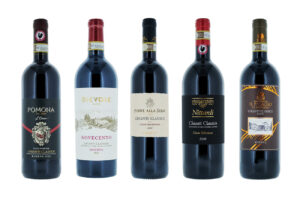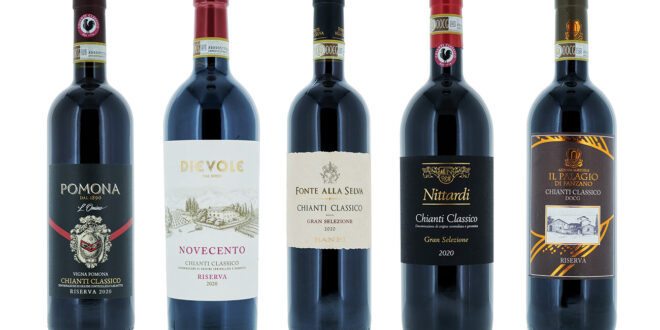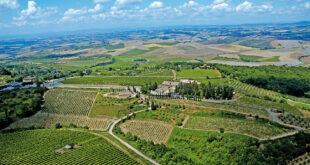
Michelle Cherutti-Kowal MW, Sara Bachiorri and Jason Millar tasted 134 wines, with 4 Outstanding and 79 Highly Recommended.
Chianti Classico: Panel tasting scores
131 wines tasted
Exceptional 0
Outstanding 4
Highly recommended 79
Recommended 50
Commended 2
Fair 0
Poor 0
Entry criteria: producers and UK agents were invited to submit their Chianti Classico red wines in the categories Gran Selezione 2020, Riserva 2020 and annata 2021
This tasting provided a rare opportunity to sample all three styles of Chianti Classico side by side, from two differing vintages: 2021 for the regular ‘annata’ bottlings, and 2020 for Riserva and Gran Selezione.
Prior to the creation of the Gran Selezione category (approved by the European Commission in February 2014, the first vintage to which it could be applied was 2010) several estates already produced three styles of Chianti Classico: annata (standard vintage release aged for a minimum of 12 months, but with no requirement for any time in oak), Riserva, and their own special selection or single-vineyard bottling.
When the Gran Selezione category became official, some producers used the opportunity to explore the characteristics of Sangiovese by introducing variations in both extraction levels and oak usage, which created some controversy among local and international press.
As judge Jason Millar commented: ‘Gran Selezione is an evolving category that will continue to develop over the coming harvests.’
Our tasting validated that these wines have established their place within the Chianti Classico hierarchy, and the region now offers drinkers a variety of styles and price options.
Scroll down to see the top results from the Chianti Classico panel…
Source : https://www.decanter.com.master.public.keystone-prod-eks-euw1.futureplc.engineering/wine-reviews-tastings/wine-panel-tastings/chianti-classico-panel-tasting-results-539742/



